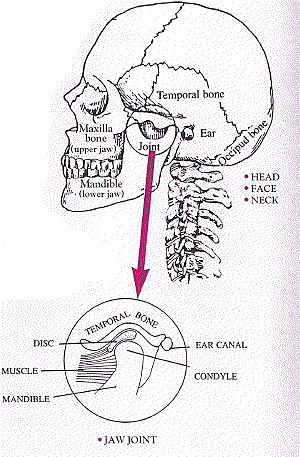 and the muscles of mastication. When the jaw joints work properly, they are capable
of completing a unique five-way movement: up and down, side-to-side, back and forth,
glide, and glide/ rotate.
and the muscles of mastication. When the jaw joints work properly, they are capable
of completing a unique five-way movement: up and down, side-to-side, back and forth,
glide, and glide/ rotate.Contents
This "plain-talk" guide is intended to help you learn about your jaw joints and how to keep them healthy. By understanding how healthy jaw joints work and their importance to your overall body health, you will become more aware of how you can prevent unnecessary trauma or injury to them.
Over the following pages, you will read a lot about your jaw joints or, as they are more accurately called, your Temporomandibular Joints. You will also read about the TMJ disorder, which affects these joints and has a profound impact on the health of your entire body.
TMJ has become a growing health care dilemma in our society. Millions of Americans are afflicted with TMJ. Through ever-increasing health and education programs, the American public is learning about the signs and symptoms of TMJ. However, there are still many mysteries and contradictions surrounding the TMJ dilemma.
Many people have the signs and symptoms of TMJ but have never been properly diagnosed. Others have very mild cases, and still others have extremely serious TMJ conditions and are considered chronic or intractable cases. This guide is designed more to assist the undiagnosed and the new TMJ patient, but it will also be of value to the chronic sufferer and the professional health care provider. (A guide for long-term TMJ patients will be published.)
In the absence of consensus within the health care community on this multi-faceted health disorder, this guide can help you to become involved in your own wellness. The self-help tips contained in this booklet will allow you to practice prevention and will enable you a greater decision-making role in your overall health care.
Best of Health.
Milton and Renée Glass
Co-founders and Presidents
?TMJ, stands for Temporomandibular joints and the physical disorders associated with these joints. These two jaw joints, located in front of the ears, attach the lower jaw (mandible) to the temporal bones in your skull. Temporomandibular joints (TMJ) serve as hinges for the jaws and move together every time you use your mouth. Any disruption or disorder to these joints could lead to a medical-dental problem.
TM Joints are more flexible and complex than most other joints in the body,
and they are the only joints that must interact with the jaws, mouth, to teeth,
 and the muscles of mastication. When the jaw joints work properly, they are capable
of completing a unique five-way movement: up and down, side-to-side, back and forth,
glide, and glide/ rotate.
and the muscles of mastication. When the jaw joints work properly, they are capable
of completing a unique five-way movement: up and down, side-to-side, back and forth,
glide, and glide/ rotate.
TM Joints are separated into distinct cavities, cushioned by a disk of dense fibrous cartilage, held together by ligaments, and moved by many pairs of muscles. Jaw joints are also the essential path for the large neurological system running between the brain and the spinal cord, affecting all sensory and motor activity. When this intricate and delicate balance is disturbed, it can spread pain and dysfunction throughout your entire body.
TMJ is an ancient disorder that has only recently received widespread attention. Because it is not yet accepted as a medical discipline, no accredited medical or dental specialty is specifically charged with the responsibility. This lack of medical recognition contributes to the controversy around TMJ, stalls general agreement on its causes, diagnoses, and treatments, and has delayed the teaching of prevention of the disorder.
Trauma to the jaw joints can upset the delicate balance of the disks and can affect the connective tissues, muscles, and ligaments
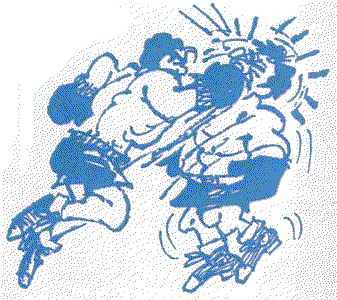 that control the movement of the jaws, resulting in TMJ. All the causes of
TMJ are not yet known, and the reasons for its onset can range from difficulties
during the birth process, growth and development stages, and on through the aging process. It is known that TMJ can be caused by arthritic changes in the joints, blows to the head and mouth, whiplash, falls, sports injuries, medical or dental treatments or misdiagnosis, orthodontia, and other treatment induced (iatrogenic) or traumatic events.
that control the movement of the jaws, resulting in TMJ. All the causes of
TMJ are not yet known, and the reasons for its onset can range from difficulties
during the birth process, growth and development stages, and on through the aging process. It is known that TMJ can be caused by arthritic changes in the joints, blows to the head and mouth, whiplash, falls, sports injuries, medical or dental treatments or misdiagnosis, orthodontia, and other treatment induced (iatrogenic) or traumatic events.
Awareness Helps Prevention
The Jaw Joints Foundation (JJAMD) believes that TMJ disorders are largely preventable through awareness and education. Knowing the structure and function of your jaw joints and their important relationship to total body health gives you a better chance to avoid TMJ.
This guide is intended to help you to become more aware of how your body works, so that you do not cause harm to yourself from lack of awareness.
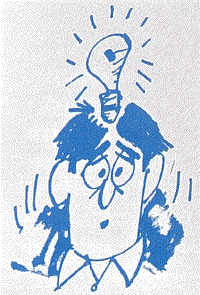
Although health has become the leading topic in America and health programs abound, it is also a fact that we are not routinely taught how our bodies are structured, how one part of our body system interacts with another, and how we function. Therefore, we are often left to think that we can do anything we want to do with our bodies, without realizing that we can cause harm to ourselves through lack of understanding.
We must all work, carry children or bundles, play, or ride in vehicles. These activities might strain your physical capacity. While you might- not have a choice in what you must do, you can help yourself to learn what protective measures will reduce the strain on your musculo-skeletal system and your jaw joints. Be kind to yourself, because bad habits from innocence can be devastating to your life.
In some motor activities, your body parts can work independently on one side
 or other-such as the arms and legs. At other times, they must also work together to
perform a particular task or function. But the jaw joints, unique among all other joints
in the body, must always work on both sides at the same time, and one side is absolutely
dependent on the other side.
or other-such as the arms and legs. At other times, they must also work together to
perform a particular task or function. But the jaw joints, unique among all other joints
in the body, must always work on both sides at the same time, and one side is absolutely
dependent on the other side.
In order for the body to efficiently per form all of life's tasks free of pain and dysfunction, it is essential that the body work in an ideal harmonious balance and that you do everything you can to respect and maintain that balance.
It has been said that your oral-facial complex is the most important part of your body. Not only for the numerous functions it must perform, but also for how you look and feel about yourself-for all emotions are reflected in your face.
If you have been officially diagnosed with TMJ, you will soon learn that you have entered into a strange new world. Out of necessity, your life will chance. Therefore, it is important that early on you understand some of the issues you may encounter with practitioners, friends, family, and workplace associates-as well as how health insurance carriers, workers' compensation, and Social Security view TMJ and your right to your benefits. Your greater awareness of issues surrounding TMJ will mean that you will be better equipped mentally and physically to deal with the confusion surrounding this condition.
Difficult to accurately diagnose, TMJ is often labeled by practitioners as "all in a patient's head," which creates a difficult situation for the patient. To you, pain, dysfunction, and suffering are very real and this lack of substantiated medical proof of your condition can-at times-cause you to feel depressed and alienated. Self-help or
support groups are often an essential step in enhancing the wellness of TMJ sufferers. Knowing you are not alone is very important, even if you don't want to hear other people's problems. Remember that you will have the benefit of learning what helps or hurts in a friendly atmosphere.
TMJ can often be caused by unknowingly overloading or misusing your
neuro-muscular-skeletal system through poor postural or physical and oral habits.
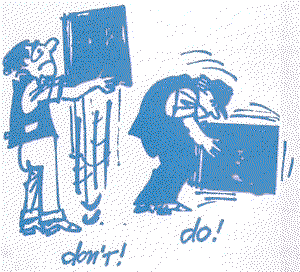 For instance, this might include hyper-extending or overusing your jaw joints when
eating oversized sandwiches; biting into hard foods such as apples, hard candies, and
ice cubes; overzealous gum chewing; excessively wide yawning; or cradling the telephone
between your neck and shoulder. When eating, distribute food evenly on both sides of
your mouth to avoid pressure on one jaw joint. Hyperextension of your jaw joints during
necessary medical or dental procedures can also contribute to the onset of TMJ. Proper
posture helps the body to maintain the head, neck, and spine in the proper balance needed
for your body to function without overloading any of your bodily joints or muscles.
Sitting in an improper or constant position at the computer, improper lifting, exercising,
and trauma from rough play or accidents can cause TMJ as well.
For instance, this might include hyper-extending or overusing your jaw joints when
eating oversized sandwiches; biting into hard foods such as apples, hard candies, and
ice cubes; overzealous gum chewing; excessively wide yawning; or cradling the telephone
between your neck and shoulder. When eating, distribute food evenly on both sides of
your mouth to avoid pressure on one jaw joint. Hyperextension of your jaw joints during
necessary medical or dental procedures can also contribute to the onset of TMJ. Proper
posture helps the body to maintain the head, neck, and spine in the proper balance needed
for your body to function without overloading any of your bodily joints or muscles.
Sitting in an improper or constant position at the computer, improper lifting, exercising,
and trauma from rough play or accidents can cause TMJ as well.
Grinding your teeth or clenching of your jaws are often cited as the primary causes of TMJ. In fact, grinding and clenching occur in two ways: (1) self-induced grinding, which can be controlled througl-i your own effort, and (2) any damage from an earlier dental or oral procedure, which can be professionally adjusted. However, any extensive grinding adjustments by a dentist should be conducted after no fewer than two independent professional opinions, since occlusal adjustment through teeth grinding is often cited as a cause of TMJ. You can help yourself by making a conscious effort to keep your jaws relaxed (lips together, teeth apart) and not clenching your teeth and jaws while performing lifting or other exertions.
Here are some additional self-help tips to prevent damage to your jaw joints and to your musculo-skeletal system in general:
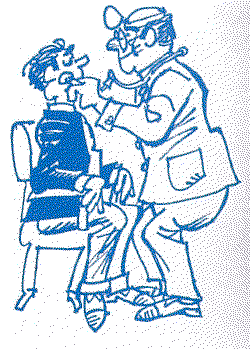
Recognizing the SYMPTOMS
There are a wide variety of signs and symptoms indicative of TMJ.
Typically, a TMJ diagnosis is made after the patient complains of
dysfunction or pain in the head, face, neck, and shoulders. However,
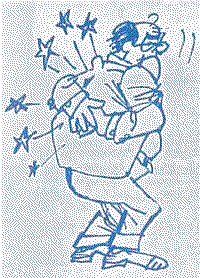 pain and dysfunction in other parts of the body-that are seemingly
unrelated-can also be a part of or the result of TMJ.
pain and dysfunction in other parts of the body-that are seemingly
unrelated-can also be a part of or the result of TMJ.
Symptoms of TMJ include pain and dysfunction that can radiate throughout the entire body, multiple headaches, and pain in the face, sinuses, ears, eyes, teeth, neck muscles, back, and leg cramps. Clicking and grating in the jaw joints, inability to open or close the mouth freely, and difficulty in chewing and swallowing are also often evident. All of these pain and dysfunction symptoms can be temporary or chronic (continuing for longer than six months) or intractable (never-ending).
If you have any of these symptoms, your primary care physician or dentist should be consulted. If unable to help you at an early stage, it becomes incumbent on him or her to assist you in finding qualified practitioners who will use conservative treatment methods, are compassionate, and do not channel you automatically or unfairly into a psychological or pharmaceutical treatment program.
Diagnosing "The Great Impostor"
This vast variety of symptoms makes a correct TMJ diagnosis difficult. Additionally, most TMJ symptoms mimic and overlap many other disorders, such as Myofascial Pain, Fibromyalgia, and Chronic Fatigue Syndrome. Compound this with the lack of universally accepted scientific research, and TMJ has acquired the name of "The Great Impostor," and has been described in the press as "A Medical Mess."
Correctly diagnosing TMJ remains a medical and
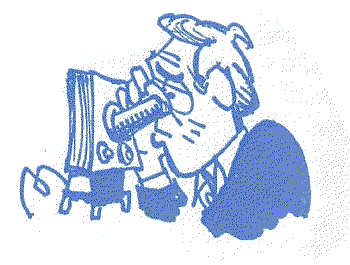 dental challenge. Hand in hand with physically examining
the symptoms, X-rays and MRIs (Magnetic Resonance Imaging) are increasingly
effective in successful diagnosis. MRIs are an effective (non-X-ray) imaging
technique to look into these joints and their surrounding, soft tissues, and are
considered "the Gold Standard."
dental challenge. Hand in hand with physically examining
the symptoms, X-rays and MRIs (Magnetic Resonance Imaging) are increasingly
effective in successful diagnosis. MRIs are an effective (non-X-ray) imaging
technique to look into these joints and their surrounding, soft tissues, and are
considered "the Gold Standard."
Correct diagnosis is the first step to effective treatment, so it is essential to secure at least two independent opinions before any therapy begins. When seeking a diagnosis, it is important to seek out health care practitioners who believe your symptoms have a physical, not a psychological, basis. These practitioners typically begin therapy with conservative, non-invasive, reversible treatments. They also should provide you with written information about their recommended procedures, including the benefits and possible side effects or adverse long-term consequences. These practitioners should be willing to connect you with other patients or to support groups for people who share similar pain and dysfunction.
About Treatment
All treatments and exercise programs are intended to help you by strengthening the muscles, improving range of motion, or promoting relaxation for general well-being. But because there is so much variability in the TMJ disorder and in your own body's ability to adapt or to cope, it is difficult to suggest which treatments are best for you. It is possible that you will have to expect a "trial and error" period. Ultimately, you will have to decide for yourself which treatments, if any, are best for you. There is a school of thought which maintains that 90 percent of all signs and symptoms will go away on their own or with minimal self-care or very conservative treatment. But, you must use caution since there is a risk that your symptoms can worsen if this minimal regimen is not right for you.
Practitioners who treat TMJ should be trained in a broad range of treatment methods. Each TMJ patient should be provided with an individualized therapy targeted to the patient's needs. Often, practitioners who practice in a multi-disciplinary environment, like a health center or hospital, have greater access to information and technical support regarding TMJ. Many teaching hospitals and clinics with a multi-disciplinary approach now include TMJ. However, it is very important that they are not jammed into a narrow bias that TMJ is mostly a "psychological chronic pain syndrome," or that only surgery will resolve your problem.
Current treatments vary greatly and may be self-administered or provided by a professional. You should remember that there is as yet no one proven scientific or all-effective treatment for curing- TMJ. In fact, many treatments are unnecessary, ineffective, and irreversible, so it is important that you understand any recommended treatments and the expected results.
Plastic bite planes (splints) are often used on a short-term basis to reposition the jaw joints, relax the muscles, and reduce the pressure on the teeth and joints. Holistic and non-traditional therapies, such as acupressure, different forms of massage, and herbal remedies, are sometimes used effectively. Other treatments consist of applying moist heat and ice; hands-on physical therapy; nutrition, relaxation, and habit modification therapies; as well as short-term mild to aggressive forms of pain or muscle relaxant medication either over-the-counter or by prescription.
Any non-invasive treatment which helps to stop the pain and improve function is preferable. While some treatments might be effective by offering relief early on, as the TMJ condition continues or worsens, these same treatments can lose their effectiveness. For example, while mild drug therapy can help alleviate pain, you can run the risk of: (a) becoming drug dependent if taken over a long-term basis; (b) masking the symptoms which can delay appropriate treatment; (c) produce adverse consequences, e.g. gastrointestinal problems; (d) function can be compromised and could delay a more appropriate treatment.
Avoid Surgery
Although all
surgeries have risks, TMJ surgeries are especially risky have proven mostly
unwarranted or unsatisfactory.
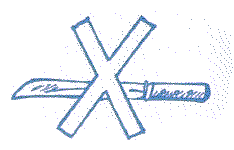 An initial surgery can often lead to mar more.
Except in life-threatening emergency situations, it is strongly recommended that
TMJ surgeries be avoided or conducted only after multiple independent opinions. A
dditionally, certain jaw joint implants have been reported by the Food & Drug
Administration to cause serious long-term medical problems, and rules have been
tightened on their usage/approval. If you have had a silicone/proplast/jaw joint
implant, call the FDA at 301-443-4647 to receive information.
An initial surgery can often lead to mar more.
Except in life-threatening emergency situations, it is strongly recommended that
TMJ surgeries be avoided or conducted only after multiple independent opinions. A
dditionally, certain jaw joint implants have been reported by the Food & Drug
Administration to cause serious long-term medical problems, and rules have been
tightened on their usage/approval. If you have had a silicone/proplast/jaw joint
implant, call the FDA at 301-443-4647 to receive information.
Not Only a Women's Disorder
The Current research literature indicates that there is no
significant scientific reason for a difference in the incidence
 of TMJ between males and females or children ai-id the elderly. Despite
that fact, TMJ is most often identified as a female disorder caused by stress and
brought on by self-induced teeth grinding.
of TMJ between males and females or children ai-id the elderly. Despite
that fact, TMJ is most often identified as a female disorder caused by stress and
brought on by self-induced teeth grinding.
Women routinely seek medical and dental help more often than men; consequently, TMJ is seen more often in women and has become unfairly stereotyped. This unscientific female stress designation relegates TMJ to a "dental or mental" condition often treated incorrectly with psychological or drug therapies rather than physical therapies. This gender stereotyping is not only harmful to women, but precludes men and children from receiving sound diagnoses and treatments.
Health Insurance Coverage Is a Problem
Because of the lack of consensus on diagnoses and treatments and the absence of generally accepted medical protocols around TMJ, very few health insurance plans include TMJ coverage except for certain diagnostic procedures (i.e., x-rays) or with very limited caps on total payments. Insurance coverage would not only alleviate the financial burden on TMJ sufferers, but would also provide sound actuarial data by which to determine risk and gather valid statistics on the incidence of TMJ. Although 12 States" have mandated TMJ be considered a legitimate medical entity, nevertheless each has service problems and/or very restrictive rules, which can be disadvantageous to the TMJ patients. For instance, irreversible surgery is allowed, but usually not conservative or alternative treatments, such as hands-on therapy. You and your doctors might have to be persistent in presenting a strong case for your entitlements.
Until TMJ becomes an established medical or scientific discipline and there is wide agreement on generally accepted treatment, it is important for the TMJ patient to have some self-reliance and learn how to help himself or herself.
If you experience any pain,
discomfort, or functional chewing and swallowing difficulty
 associated with TMJ, or if you are currently undergoing treatment for
TMJ, be sure that you have a customized program of therapy that will benefit you
physically, emotionally, and nutritionally. We've already mentioned some prevention
tips in the "
associated with TMJ, or if you are currently undergoing treatment for
TMJ, be sure that you have a customized program of therapy that will benefit you
physically, emotionally, and nutritionally. We've already mentioned some prevention
tips in the "
Valuable First Steps
As indicated in the Awareness section of
this guide, a valuable first step is to join a TMJ self-help support group.
If there is no group formed in your community, contact JJAMD; your local resources
may be able to assist you in this effort. In the interim, join anysupport group
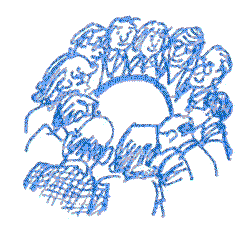 dealing with pain and dysfunction, as well as patient rights and entitlements. Becoming
a member of one of these groups will help you to adopt measures to better cope
with the lack of understanding and the frustration, depression, and anxiety
surrounding TMJ. You might find that family, friends, and work associates
may become impatient with you and fail to understand the chronic pain,
dysfunction, and other problems you are facing. Therefore, they will not
be able to provide you with the necessary support during your greatest time of
need. They are often told that your problems are not real and are your own fault.
You might feel alienated, abandoned, and isolated. A self-help support group will
provide a place to make new friends, share problems you are experiencing, and provide
useful information. You will need to discover methods to minimize your own pain and
dysfunction, and only by trying various methods will you be able to know what works
best for you.
dealing with pain and dysfunction, as well as patient rights and entitlements. Becoming
a member of one of these groups will help you to adopt measures to better cope
with the lack of understanding and the frustration, depression, and anxiety
surrounding TMJ. You might find that family, friends, and work associates
may become impatient with you and fail to understand the chronic pain,
dysfunction, and other problems you are facing. Therefore, they will not
be able to provide you with the necessary support during your greatest time of
need. They are often told that your problems are not real and are your own fault.
You might feel alienated, abandoned, and isolated. A self-help support group will
provide a place to make new friends, share problems you are experiencing, and provide
useful information. You will need to discover methods to minimize your own pain and
dysfunction, and only by trying various methods will you be able to know what works
best for you.
A Medical And Dental Problem
There is currently no universally recognized
medical discipline or accredited medical specialty that addresses TMJ.
Jaw joints, due to their location in the oral cavity, are the only joints
in the body that are considered both medical and dental joints. They are
commonly and mistakenly isolated from whole body health and "assigned" to
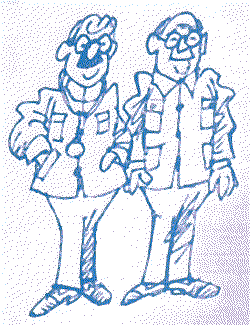 the realm of dentistry. Temporomandibular joints must be perceived as part
of the whole body system and treated as are all other joints in the body.
It is urgent that the medical profession take an active role in the diagnosis
and treatment of TMJ. A change in perception would have several important consequences:
the realm of dentistry. Temporomandibular joints must be perceived as part
of the whole body system and treated as are all other joints in the body.
It is urgent that the medical profession take an active role in the diagnosis
and treatment of TMJ. A change in perception would have several important consequences:
First, physicians would become more involved in the prevention, diagnosis, and treatment of TMJ. Although the disorder is the focus of a diverse group of health care practitioners, Generally medical doctors are largely noticeably absent from this group. Until the broader medical community comes on board to accept an appropriate role in the multi-disciplinary team, TMJ will continue to be a dilemma for the patients, providers, insurers, regulators, the media, and society as a whole.
Second, TMJ patients would receive more holistic care. Current treatments often focus narrowly on the jaw and neglect other physiological systems in need of care. The desired therapeutic outcome is often not achieved, and many patients are left in serious pain or with serious dysfunction.
Finally, TMJ would become part of an interdisciplinary medical/ dental specialty that would set the appropriate standards for diagnoses and treatments which would expedite and facilitate the much-needed routinely covered health insurance. TMJ specialists could engage in scientifically valid research and establish a consensus about TMJ.
The current focus on health care reform places on all of us the additional responsibility for consistent preventive education which will help to reduce the high cost associated with TMJ treatment.
All of the problems cited create what JJAMD calls "The TMJ Dilemma." It is JJAMD's mission to help overcome these problems and the burdens they place on both individuals and society.
Why You Should Become a Member of the Jaw Joints Foundation
Since l982, the JJAMD Foundation has conducted support/self-help groups, organized professional lectures and seminars, and participated in and sponsored original research. It has become a repository for patient and professional information. JJAMD has also built an extensive TMJ-specialized library and database and conducts literature searches on request. We have heard from thousands of patients around the world, and our extensive work has given us a deep understanding of TMJ patients, their medical/dental profile, their needs, and their frustrations. JJAMD believes its unique perspective on and broad approach to TMJ has already contributed to valid scientific evidence and research, awareness and prevention.
As a JJAMD member, you'll become part of a necessary
and growing grassroots movement to be seen and heard in a united effort
to help you and to help resolve the TMJ dilemma. Your support enables
JJAMD to be better heard by federal, state, and local governments and
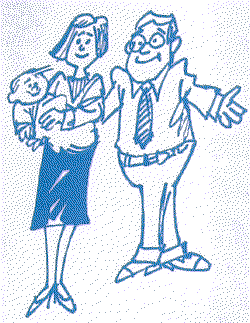 agencies such as the National Institute of Health and the National
Institute of Dental Research, as well as professional medical and dental
societies such as the American Medical Association, the American Dental
Association, and the Arthritis Foundation. Your visibility will prove the
truth about all the many facets of TMJ. No one will be allowed to
emotionally mistreat you. You will have direct input into your
destiny. A clear, unified voice will not only foster more
widespread understanding of TMJ, but will also further diverse
research, entitlements, pro-active legislation, and uniform insurance coverage.
agencies such as the National Institute of Health and the National
Institute of Dental Research, as well as professional medical and dental
societies such as the American Medical Association, the American Dental
Association, and the Arthritis Foundation. Your visibility will prove the
truth about all the many facets of TMJ. No one will be allowed to
emotionally mistreat you. You will have direct input into your
destiny. A clear, unified voice will not only foster more
widespread understanding of TMJ, but will also further diverse
research, entitlements, pro-active legislation, and uniform insurance coverage.
JJAMD has initiated a National TMJ Alliance to self-help support advocacy organizations and tie together a national program of information sharing and education about Temporomandibular joints.
JJAMD members network with other TMJ patients, learn from others' experience, gain emotional support, and learn about resources such as local self-help support groups (although there are only a few). Members also have access to a wide range of educational materials, most of which has been written from members' experiences. Also, JJAMD's TMJ Update will keep you informed on issues relating to progress in the field as they develop. Remember that you are not alone.
For further information on Jaw joints and the TMJ Dilemma, please send a 9xl2 self-addressed stamped envelope to JJAMD Foundation, Forsyth Research Institute, 140 Fenway, Boston, MA 02115 -3799. Fax numbers: (617) 267-4021 or (617) 267-9020.
Please complete JJAMD's own Research Questionnaire in the Survey portion of this web-site and return for inclusion to our database and for ongoing research. Your confidentiality is assured.
A Plain Talk Guide to TMJ Terms
There are a variety of names, acronyms, diagnoses, and treatments-too many to list all or the detailed definitions herein. There is so much written information in professional journals, popular articles and books. There are many differences of opinions, biases, and inadequate research studies. Additionally, there are other health disorders admitting to a TMJ component. This has led to confusion on terminology used by the various professionals involved in TMJ research, education, diagnoses, and treatments and by those reporting the information.
Terminology in some cases has become charged with meanings that sometimes work to the disadvantage of the TMJ patient. It can stall the potential for prevention, appropriate diagnoses, treatments, and referrals, and for getting well more quickly. A case in point is the frequent use of the terms: stress, behavioral, chronic Pain, and "Psychosocial" to describe the TMJ disorder, and by inference, mostly the female TMJ patient. The dictionary definition of "psychosocial" is related to both psychological and social factors. If TMJ is a psychosocial disorder, how does one characterize the physical and medical aspects of the disorder, which are neither psychological nor social in nature?
This Plain Talk Guide to TMJ Terms will only highlight the most often used everyday terms. It will help to familiarize you with some of the terms frequently used to describe the numerous and growing names and acronyms; the anatomy, functions, diagnoses, and treatments for TMJ. We have tried to make it easier for you, by putting them into categories, but be aware that some of the categories overlap and are simplified. For more detailed definitions and information, we recommend the following opportunities:
Terms
Acronyms
-TMJ, TMJD, TMD, CMD, MPD, and others.Other Names Used for TMJ Disorder-Temporomandibular Disorder, Craniofacial Pain, Maxillofacial Pain, Orofacial Pain, Myofascial Pain Dysfunction and others.
Symptoms
Clicking/popping in jaw joints
Bruxing/clenching/deviation
Difficulty opening/closing jaws
Jaw joints-jammed or locked
Spur formations
Trigger points painful
Diagnostic Techniques-Invasive:
X-rays
Arthograms/Cat scan Tomogram, transcranial
Non-Invasive
EMO (electromyography) measures
MRI-magnetic resonance imaging
Kineseology
Palpation
Range of motion analysis
Treatment Therapies-multi-disciplined - may combine various treatments at the same time delivered by health professionals in various fields of medicine and/or dentistry. This includes both traditional and non-traditional therapies. Some treatments are considered invasive or non-invasive, helpful and non-helpful, harmful, quackery, or futile by patients and professionals. The criteria of designation here is, therefore, used as "invasive": implying irreversible, not proven, objectionable, or frowned upon; or "non-invasive": implying, reversible, conservative, or more preferred. Many opinions might be useful to you before you submit to treatment/s. Become informed
Invasive
Bite planes, splints, orthotics, used over an extended time
Hyper-extending jaw joints
Equilibration (grinding down teeth)
Injections in face and jaw joints
Remodeling or replacing the jay joints
Orthodontics
Stretch and spray
Surgery: (most invasive of all)
Arthoscopy
Srthoplasty
Cosmetic
Jaw joint implants (silicone)
Prosthetics
Orthognathic
Non-Invasive: (patient subjective reaction to/adaptability
Acupressure
Acupunctiure
Biofeeedback
Sonography
Moinst heat/cold packs
Study models (study teeth/joint relationship)
TENS (nerve stimulation)
Ultrasound
Other Medical/Dental Terms that TMJ Patients Often Hear
Area or Location - Anatomy
Anterior or Posterior
Articular, articular disc and eminence
Capsult
Sinus
Fossa
Name of Condition/Category (see Survey for others)
Arthritis (rheumatoid-inflamed)
Myofascial or Myofacial pain (MPD)
Osteo-degenerative jaw joints
Malocclusion (bad bite)
Tic douloureux
Whiplash
Muscle categories
Masseter
Pterygoid
Spasm
Sternocleidomastoid
Temporalis
Trapezius
Neruological (nerves) Category
Autonomic nervous system
Neuralgia/neuritis
Neurologist
Trigeminal
Pain category
Acute (recent onset)
Chronic (more than six months)
Intractable (ongoing, neven ending)
Backaches - arms-legs
Headaches: migraine-like, cluster, tension
Migrating (moves to other areas)
Myalgia - fibromyalgia
Pain centers
Pain threshold/tolerance
Referred
Tissue Category
Connective
Membrane
Ligament
Synovial (lubrication)
Psychological categories
"All in your head"
Behavioral (negative habits)
Psychogenic
Psychosocial
Psychosomatic
Psychosis
Stress
Seemingly Unrelated Disease or Disorders Requiring Oral Health Treatment/s Which Require the Jaw Joints to Be in Play
More and more, patients and advocacy organizations are reporting on a variety of similar problems, signs and symptoms, and other disorders, that overlap with their jaw joints. Ongoing collaborative research is increasingly proving the connection of one with the other.
Anorexia
Arthritis
Carpal Tunnel Syndrome
Ectodermal Dysplasias
Ehlers-Danlos
Epstein-Barr
Fibromyalgia
Lupus
Paget's
Parkinson's
Repetitive Motion
Scleroderma
Sjogren's
Tinnitus
Other Human Issues That May Precipitate TMJ
Abused child
Sports injuries
Battered woman
Vehicle accidents
Difficult labor and/or birth
Work related injuries,
Silicone implants (i.e. breast, jaw etc.)
physical stress
Credits
Sponsored by the Jaw Joints & Allied Musculo-Skeletal Disorders Foundation, Inc - (JJAMD), a 501 (c) (3) educational advocacy organization, est. 1982. JJAMD wishes to thank Ann George, Laura Ward, Phil Golden, and Susan Pearlman for their efforts in producing this guide, and Lew Sayre Schwartz for his cartoon illustrations.
"Life revolves around the jaw joints in every motor and sensory activity, 24 hours a day."
Educating yourself in the importance of the function and delicate balance of the jaw joints to overall health
can help prevent you from fatting victim to "TMJ" and allied disorders.
Education, prevention, and research are three of JJAMD's goals
Jaw Joints & Allied Musculo-Skeletal Disorder Foundation, Inc.-JJAMD
Forsyth's Research Institute
140 the Fenway
Boston, MA 02115-3799
(617) 266-2550 or (617) 262-5200 Ext. 265
Fax: (617) 267-9020
1994 by JJANID: Permission in writing required for reproduction.
Printed at Blue Cross and Blue Shield of Massachusetts.
11/94